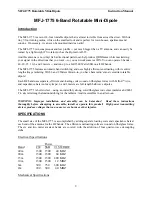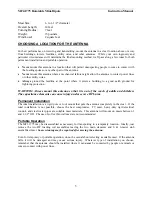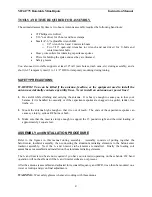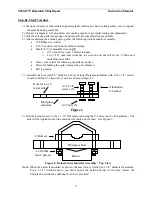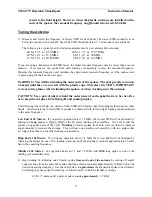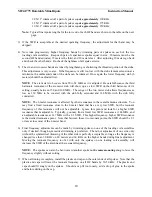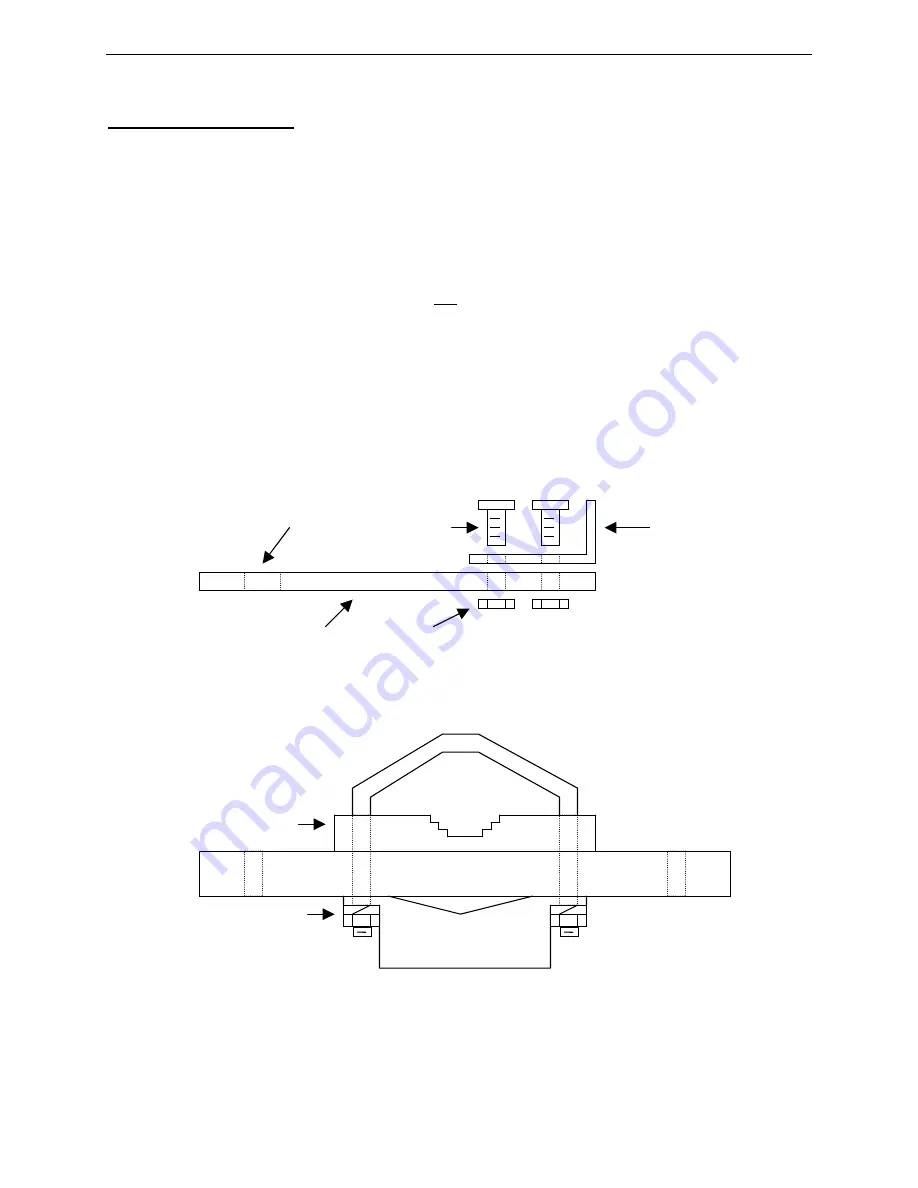
MFJ-1775 Rotatable Mini-Dipole
Instruction Manual
5
Step-By-Step Procedure
1) Set up saw horses or other stable supports (plastic trash cans, chairs, folding tables, etc.) to support
the antenna during assembly.
2) Prepare a temporary 6-8’ ground-level mounting mast for easy initial testing and adjustment.
3) Sort the antenna parts into groups of similar parts. Be sure all parts are available.
4) After examining the antenna parts, gather the following tools needed for assembly:
•
#2 Phillips screwdriver
•
5/16" nut driver for #6 nuts and hose clamps.
•
Small (4”-6”) adjustable wrench OR
o
3/8" wrench for 6 and 2 meter stub nuts
o
Two 7/16" open-end wrenches (or wrench and nut driver) for U-bolts and
center insulator bolts.
•
Heavy wire cutters for trimming capacitance spokes
•
Pliers for holding the spoke ends as they are trimmed
•
Safety glasses.
5) Assemble the four small "L" brackets to the four long fiberglass insulators with 6-32 x 3/8" screws
(3 each) and the 6-32 kep nuts (3 each) as shown in Figure 1.
6) Bolt the balun loosely to the 1 x 12” fiberglass rod using the U-bolt set and ¼-20 hardware. The
nuts will be tightened when the antenna is mounted on the mast. See Figure 2.
Note:
When the balun is mounted as shown, the mast size is limited to 1-3/8” diameter maximum.
For a 1-1/2” diameter mast, you must mount the balun directly on the mast below the
fiberglass rod with the additional U-bolt set provided.
Hole for 6 or 2
meter stub
Fiberglass
insulator
Aluminum
L-bracket
6-32 x 3/8
screws (3)
6-32 nuts (3)
Figure 1
Fiberglass Rod
Balun
¼-20 LW&
nut (2 places)
U-Bolt set
Figure 2: Balun/Center Insulator Assembly – Top View


